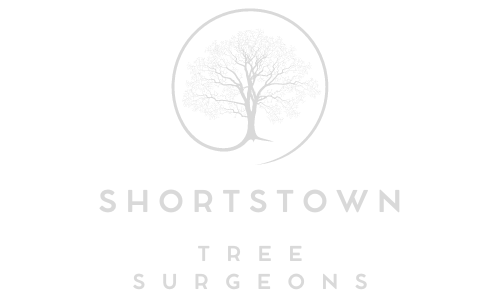Tree Surgery or Tree Removal? Making the Right Choice
Introduction
Trees enhance the beauty of any landscape, providing shade, improving air quality, and supporting local wildlife. However, there are times when trees require professional attention due to disease, structural instability, or interference with buildings and utilities. When this happens, homeowners and businesses must decide whether tree surgery or complete removal is the best option.
For property owners in Shortstown, Bedfordshire, understanding the differences between tree surgery and tree removal can help make an informed decision. Shortstown Tree Surgeons offers expert tree care services, ensuring trees remain healthy, safe, and well-maintained.
Key Takeaways
- Tree surgery helps preserve trees by treating disease, improving structure, and maintaining overall health.
- Tree removal is necessary for hazardous, dead, or severely damaged trees.
- Professional assessment ensures the right decision is made based on tree health and safety.
- Proper tree care can enhance property value and reduce long-term risks.
- Shortstown Tree Surgeons provides expert tree services in Shortstown, Bedfordshire.
Understanding Tree Surgery
Tree surgery involves specialised techniques to maintain and improve the health and structure of a tree. Rather than removing a tree entirely, surgery can help resolve issues while preserving its benefits.
When is Tree Surgery the Best Option?
- Diseased or infested trees – If a tree shows signs of disease, professional pruning and treatment can help prevent further spread.
- Overgrown branches – Trimming and crown thinning can improve sunlight penetration and reduce the risk of falling branches.
- Structural weaknesses – Trees with split or weak branches can be supported using bracing techniques.
- Storm-damaged trees – Broken or leaning trees may be restored with corrective pruning and reinforcement.
Common Tree Surgery Techniques
- Crown reduction – Reduces the overall size of a tree while maintaining its natural shape.
- Crown thinning – Selective branch removal to improve light penetration and air circulation.
- Pollarding – Encourages new growth by cutting back branches to a controlled height.
- Deadwood removal – Eliminates dead or decaying branches to improve safety and appearance.
Tree surgery allows trees to recover from damage, ensuring they continue to thrive while minimising potential risks.
When is Tree Removal Necessary?
While tree surgery can resolve many issues, there are circumstances where complete tree removal is the safest and most practical solution.
Reasons to Remove a Tree
- Severe disease or decay – If a tree is beyond recovery, removal prevents the spread of disease to other trees.
- Structural instability – Trees with significant root damage or leaning excessively pose a safety risk.
- Obstruction to buildings or utilities – Trees growing too close to houses, power lines, or drainage systems may need to be removed.
- Storm or wind damage – Heavily damaged trees can become a hazard, especially if large branches are at risk of falling.
- Dead or dying trees – A dead tree loses its structural integrity over time, making removal necessary before it becomes a danger.
Safe and Professional Tree Removal
Tree removal should always be carried out by experienced professionals to ensure safety and compliance with local regulations. Key steps include:
- Risk assessment – Evaluating potential hazards before beginning the removal process.
- Sectional felling – Cutting the tree down in sections to avoid damage to nearby structures.
- Stump grinding – Removing the tree stump to prevent regrowth and create a smooth surface.
- Waste removal and site clearance – Ensuring the area is left clean and free from debris.
For property owners in Shortstown, Bedfordshire, Shortstown Tree Surgeons provides safe and efficient tree removal services, ensuring minimal disruption to the surrounding area.
Choosing the Right Solution for Your Tree
Determining whether a tree requires surgery or complete removal depends on several factors. Consulting a professional tree surgeon ensures the best course of action is taken based on tree health, safety, and long-term property management.
Factors to Consider
- Tree health – If a tree is still structurally sound, surgery may be a viable option.
- Safety concerns – Trees posing a risk to people or property may need removal.
- Aesthetic and environmental impact – Preserving a tree through surgery can enhance the landscape.
- Cost considerations – In some cases, tree surgery may be a more cost-effective solution than removal.
Conclusion
Deciding between tree surgery and tree removal requires careful assessment of the tree’s condition, safety risks, and long-term impact on the landscape. While tree surgery can help preserve and maintain healthy trees, removal is sometimes necessary to prevent hazards and property damage. Consulting an expert ensures the right decision is made for both safety and sustainability.
For professional tree care in Shortstown, Bedfordshire, Shortstown Tree Surgeons provides expert tree surgery and removal services. Contact us today for a consultation and ensure your trees are managed safely and professionally.
Call us on: 01234 862 087
Click here to find out more about Shortstown Tree Surgeons
Click here to complete our contact form and see how we can help with your trees needs.

